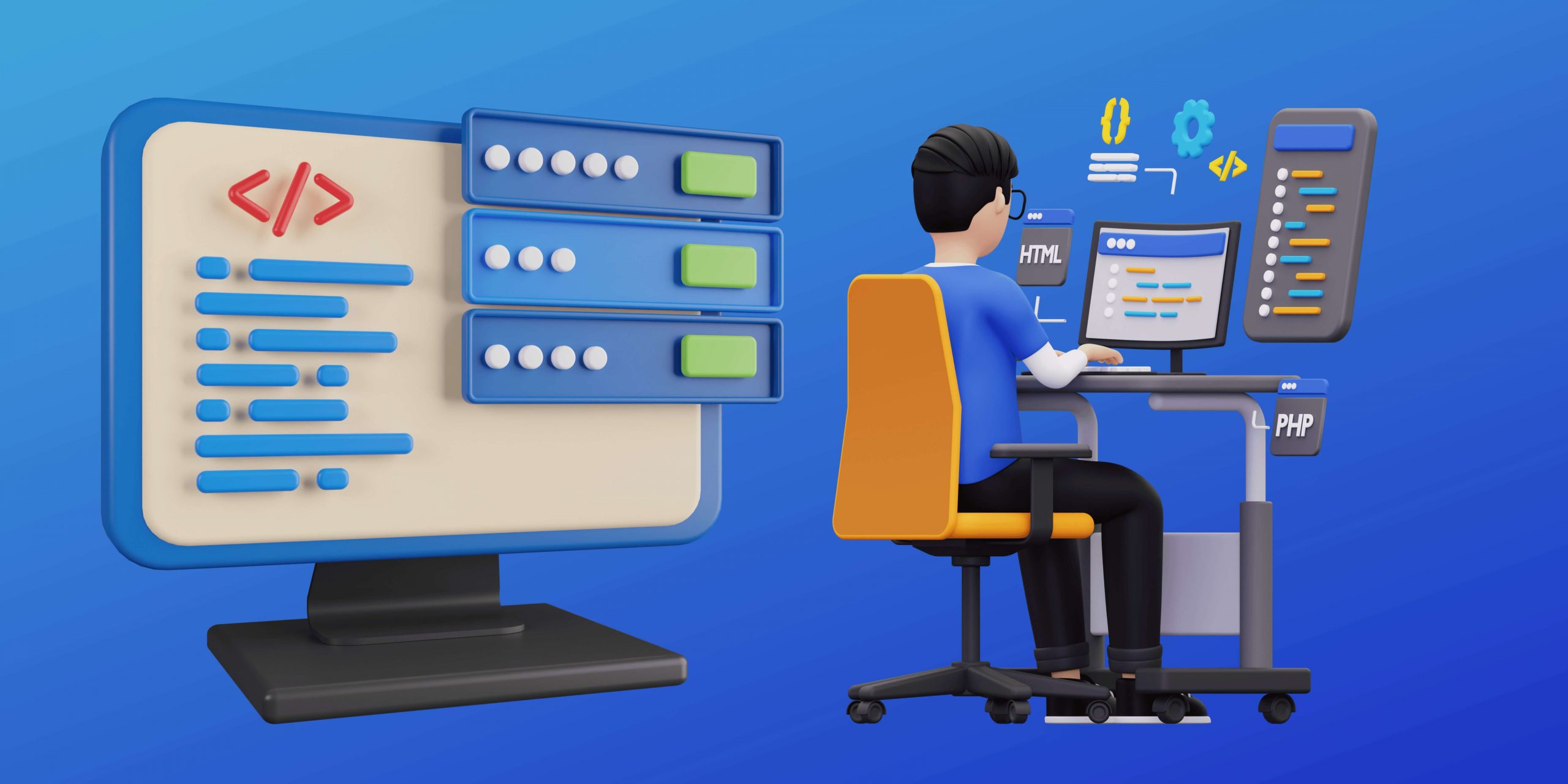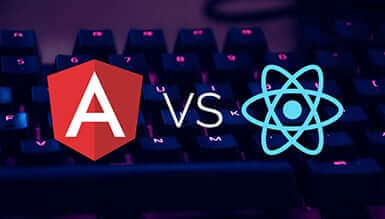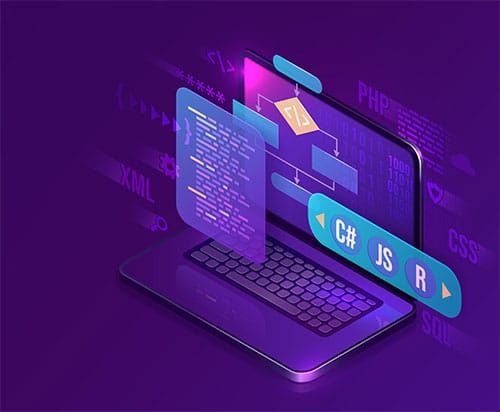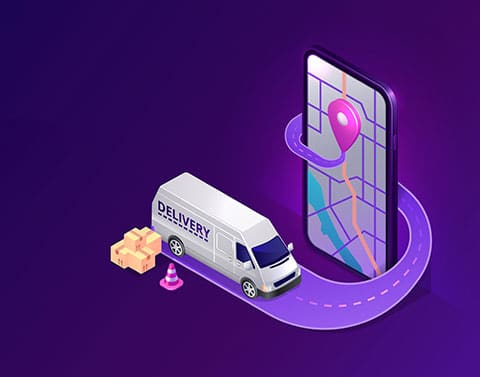The Beginner’s Guide to Backend Mobile App Development
Smartphones and other mobile devices have become integral to our daily lives as the need for always-accessible computing have increased. Smartphone apps are the device’s primary selling point.
The average smartphone user has many apps installed and uses them frequently. Meanwhile, some people rely on apps to place online food orders, others rely on them to stay in touch with loved ones who live nearby or far away. Many rely on apps to keep up with the latest events and trends in the news and markets to plan vacations and arrange travel logistics.
The widespread availability of powerful and convenient mobile applications has revolutionized how most firms operate. Companies of all sizes must introduce branded apps to sell their wares and services to customers, from mom-and-pop shops to multinational conglomerates. The goal is to have your branded app as a portal into your users’ private lives, allowing you to forge meaningful relationships with them on every level.
What is backend app development?
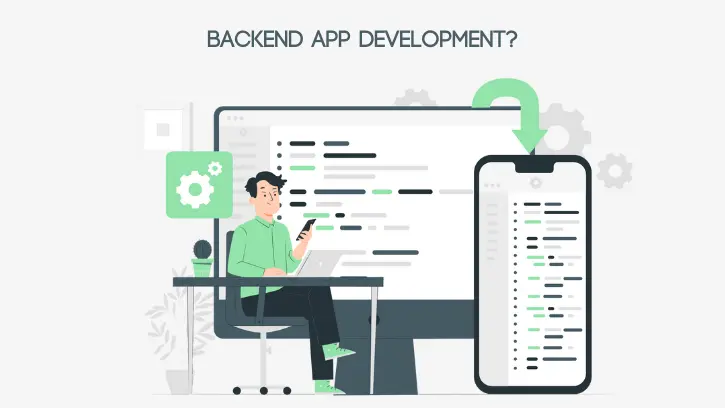
Getting through the day without your favorite electronic devices is unthinkable. As soon as you open your eyes, you reach for your phone and immediately begin scrolling through your newsfeed. The frontend refers to everything visible on a mobile device’s screen, whereas the back end refers to everything that is not.
Images, buttons, and animations are all seen by the user on the frontend, which is the client side. Because their job is closely tied to UI/UX designers, frontend developers frequently collaborate with them. How well buttons, links, and other forms of navigation function is entirely dependent on them.
When you search, send a message, download data, etc., your request is processed by the backend, which is a server-side component. It is the unseen but crucial component that users are constantly interacting with mobile app development on the back end focuses on the inner workings of an app, including its logic, infrastructure, and architecture.
Backend infrastructure includes the server, the application, and the database. The backend’s principal function is thus to manage data storage and retrieval, to communicate with the frontend, and to transmit and receive the data that will eventually be rendered as an Output.
But you should not stress about learning every technical aspect. You should have professionals to handle this issue. Talk to the experts at JumpGrowth.
Difference between Frontend and Backend
The app’s frontend is everything visitors see and interact with, including layout, menus, texts, images, videos, and other media. Also, this includes the graphical user interface (GUI) and visual components. In contrast, an app’s backend is the area to which visitors and users have no access. Discovering the inner workings of things is the focus.
1. Frontend vs. Backend Role Backend
Although they are not the same, they are two sides of the same coin: both are essential to app’s smooth operation. Frontend refers to the visible and interactive parts of an app. In contrast, backend app development encompasses all processes that occur invisibly to the user. It serves more as a facilitator for the frontend of apps.
2. Front-End and Mobile Backend Developer
The most prevalent job title in frontend APP development is “App developer,” and the App developer’s primary responsibility is to create or revamp apps with the user experience in mind. Developers working on the backend ensure the information and services required by the frontend are reliably provided. Also, mobile Backend developers manage everything that occurs behind the scenes.
3. A Primer on the Front End vs. Backend
The frontend of an application is the part that the user interacts with, often known as the “client side,” as opposed to the backend, which is the “server-side” of the application. Common backend app development languages include NodeJS, Java, Ruby, Python, PHP, .Net, etc. Frontend languages like Swift, Java, HTML, CSS (Cascading Style Sheets), and JavaScript are quite popular.
How Does the Backend App Work?
The backend does all its work unseen but is essential. The backend is responsible for the bulk of the work in authentication, data storage, and security areas. An app running on a server and communicating with a mobile app’s front end is known as the backend.
Users will have a pleasant computing experience thanks to the server’s efficient data storage, retrieval, and organization. Backend issues can have a significant impact on your apps.
In mobile apps, “backend development” refers to creating the server-side code that runs the app. It includes everything in the background while users interact with and interact with the app.
The programming that executes business logic determines which data to generate, how to generate it, and when to distribute it. It is possible to create apps with just a frontend and no backend, but they would serve little purpose. Backend development must be solid for any program to be truly dynamic and useful.
Role Of the Backend Mobile App Development
The end user is always in mind when designing software. The software’s principal purpose is to give users all the tools they need to do their jobs. As a result, it will be easier to create fully functional software that satisfies all potential customers’ expectations with effective backend development. You can only build software if you have a backend developer on staff.
Even if the user interface is attractive and captivating, this will not matter if the underlying application is not functional. Interaction with the database and ongoing calculations fall within the backend’s purview, and the system’s efficiency is contingent on its construction.
The most important part of any application’s development process is the backend development. It follows that the presence of numerous crashes and errors indicates the presence of flaws with the code in the system’s backend. However, as languages and frameworks vary, the complexity of the code may change based on the chosen technology. That is why we compiled this comparison chart of several backend systems.
Looking For Backend Development Services?
Our experts can create effective backend solutions to cover all your business requirements.
Types of Mobile App Backends
The importance of the backend in mobile app development has been established; now, let us look at the various backend solutions available.
The backend of a mobile app is like the different food options in a grocery store. You can find various food options, including restaurants, frozen foods, fresh fruits, vegetables, meats, dairy products, and more.
In this analogy, third-party backend solutions represent restaurants with predetermined menus, payment processing, and swift service. MBaaS (mobile backend as a service) solutions are like frozen dinners at the grocery store, bring home, and reheat whenever the craving strikes. A bespoke backend solution may be the making of a meal from scratch.
Let us take a close look at the three server-side components of mobile apps:
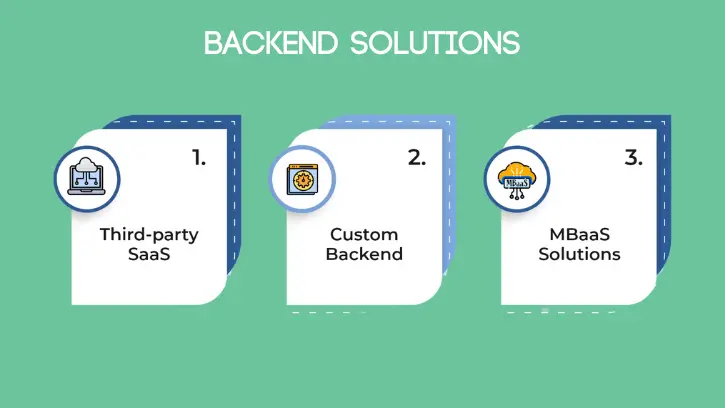
1. Third-party mobile app backend solutions — Solution-as-a-Service (SaaS)
In many cases, a product that does what you want to do already exists. The front end of your app can be linked to a platform’s backend solution (service) for a monthly or annual cost.
Such services are often called software-as-a-service (SaaS) solutions or mobile app backends. A third-party backend provides a turnkey answer. You connect to the front end, sign up for a plan, then launch the app.
2. MBaaS — Mobile Backend-as-a-Service
Third-party backend solutions may work for simple apps but will only be up to the task if you need something more sophisticated. To effectively store user data, allow for login/registration, provide authentication, and provide push alerts, apps require a robust backend.
With MBaaS, you can provide all these advantages by combining your existing components with a server-side framework. With MBaaS, you can have features in your code that go beyond what is possible with pre-built libraries and features.
MBaaS is a more adaptable alternative to SaaS, making it an attractive choice for businesses requiring functionality without expanding their infrastructure.
The framework provided by MBaaS can be modified to suit your needs. Instead of creating a backend from scratch, developers can use reusable components and pre-populated libraries to develop a more robust app.
Monthly fees for MBaaS are based on factors such as the number of users, the volume of notifications issued, and the total monthly traffic to and from the app.
3. Custom Mobile App Backend Solution
If you need extensive customization and adaptability for the backend of your mobile app, then developing a custom solution is the best option. With the support of a seasoned group of backend engineers, a one-of-a-kind backend is crafted from scratch.
The increased flexibility and control you gain by building your infrastructure and staffing your backend mobile app development team does not come without cost.
However, a custom backend is the best choice if you care about the program’s performance and security and want to create a highly scalable app.
Building an app from scratch with no external dependencies and few API (Application Programming Interfaces) connections can set it apart from the competition in this age of heightened privacy concerns.
Picking the appropriate technology stack is the first step in developing a bespoke backend. When deciding on a platform to construct a mobile backend, it is possible to consider Node.js and Ruby on Rails.
The combination of software as a service (SaaS), mobile backend as a service (MBaaS), and in-house developed solutions for the backend is another viable option. It all concerns the app’s specific use case and requirements. Consulting with engineers who can evaluate your proposal and propose a workable backend development strategy is the best decision method.
Best Backend Technologies and frameworks used for Mobile App Development
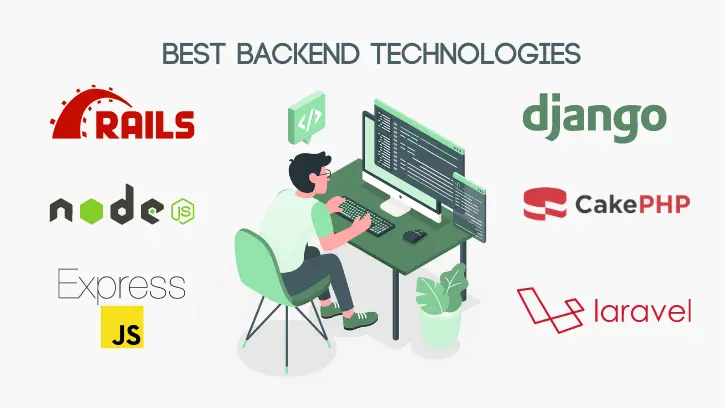
Creating a mobile app that runs entirely on the server side may be accomplished with a wide range of programming languages and frameworks. Before launching your firm and searching for developers to work on the back end, you should familiarize yourself with the most suitable backend technologies and frameworks, and below are the most common one
The Ruby on Rails framework:
Ruby on Rails (RoR) is the first great backend technology. However, many Ruby frameworks are available through RubyGems (a package manager for the Ruby language). If you want to reduce costs and create a secure application quickly, Ruby on rails is your go-to option.
Use of Python and the Django framework:
The Django framework is one of the many Python-friendly frameworks available. This framework improves program development’s quality, speed, and reliability. In addition, Python is best for AI-based projects, so you may leverage fascinating frameworks like TensorFlow if you need to include AI (Artificial Intelligence) in your firm. Python and Django, when used together, open a wealth of possibilities for developing new applications.
Use of PHP with the Laravel framework:
When creating a minimum viable product, PHP is the language of choice. Creating full-fledged mobile apps and microservices can be utilized with the Laravel framework, which adds to an efficient development process. To add, Laravel makes development times shorter.
Node.js:
In addition, this backend technology is great for making streaming mobile apps or messaging apps. It also makes it easier to make cross-platform apps. Lastly, because Node.js is part of the powerful JS package, this framework is for both frontend and backend development.
Express.js:
AKA Express, is written in Node.js and released under the MIT license. It is a popular Node.js server framework for creating APIs (Application Programming Interfaces) and other web-based software. Express is a backend component in the MEAN stack, just like the AngularJS front-end framework and the NoSQL databases. Also, Express is a top framework for creating effective web applications.
CakePHP:
It is a popular open-source web framework. The MVC (Model View Controller) structure and PHP are the basis for its development. It uses the same Ruby on Rails framework and is freely available under the MIT license. Active record, front controller, model-view-controller, convention over configuration, and data mapping are just some of the well-known software design and engineering ideas that CakePHP employs.
As you can see, it is important for startups to carefully select backend technology and frameworks based on their unique business requirements, desired features, and available funds. For instance, online insurance applications have unique logic and architectural needs, including protecting sensitive customer information. All of this must be backed up by a well-designed user interface and user experience.
Need Help With Backend Development?
Our experts can create effective backend solutions to cover all your business requirements.
Which are the Backend languages for Mobile Apps?
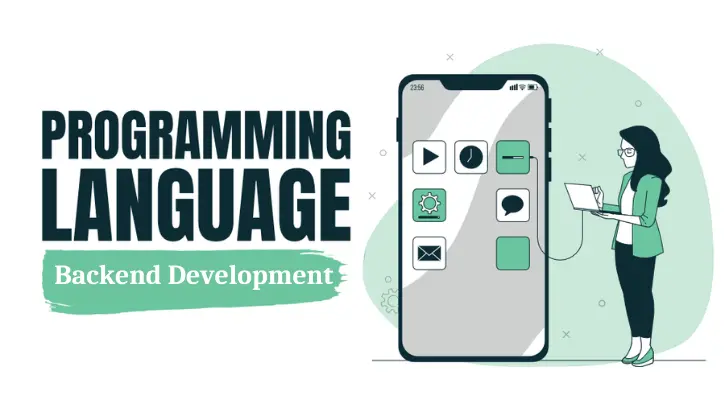
The following are the most widely used languages for developing mobile app backend services:
Ruby:
This backend language might be the best. A broadly applicable language with widespread use in web and mobile app development. Ruby on Rails is a popular web application framework that frequently incorporates its utilization. The Ruby programming language facilitates rapid development, and the majority of Ruby developers adhere to the TDD (test-driven development) methodology.
Python:
In 2022, this programming language will be the most popular among backend developers. They say it is one of the quickest and easiest backend languages to pick up. Python is often the entry point for novice programmers. Also, the language’s syntax is intuitive and includes many helpful resources, including tools and libraries. Python is a natural fit for complex AI projects.
PHP:
It is an all-purpose scripting language with everything you need to tackle problems head-on. Laravel, Symfony, Joomla, etc., are powerful frameworks that come standard with PHP and cut down on development time. Because PHP allows easy code reuse, it cuts down on project durations. Also, PHP is adaptable and works well with a wide variety of other technologies.
Node.js.
A server-side scripting development environment based on JavaScript. JS programmers can use Node.js for the creation of complex mobile applications. A clear and adaptable language. As Node.js was a part of the Java creation process, it is used by backend developers in Android mobile apps written in Java.
Golang:
The language created by Google and is the quickest server-side language. It is open source, has a basic syntax, and it also works well with C and C++ libraries, among other benefits.
Both Objective-C and Swift are supported:
Programming languages that use objects to create iOS apps. Front-end development also makes use of them. All the most difficult applications can be written in these languages.
Also Read: Top 10 Frontend & Backend Web Development Frameworks in 2023
Advantages Of Backend Development
The use of a well-developed backend for mobile apps has many benefits. The most important ones are as follows:
1. Quick Rate of Progress
Firstly, the time it takes to build an app is cut down by working on its backend. You can save 80% of backend coding time with the help of automated development technologies.
Examples of backend services that can be automated:
- Adding a content delivery network (CDN) to distribute files and databases.
- Offering an API-integrated data model that is ready for deployment.
- Configuring a server.
You can lower the production expenses for mobile apps by speeding up the development process. Also, this makes it possible for software engineers at both small and large companies to work on more high-value projects.
2. Pay Attention to Your Main Function
Businesses can free up resources to concentrate on essential functions by outsourcing backend development. When companies narrow in on what they do best, they free up resources for other, equally crucial tasks like customer retention, supply chain management, and employee morale.
3. Superior Results in Less Time
You can assure your highest standard backend development by outsourcing to experts. Also, it is well-known for its ability to eliminate repetitive codes, resulting in superior output in a shorter time.
4. Faster Product Launches
In today’s fast-paced environment, a new company must have a finished product as quickly as possible. Startups, especially in their infancy, often need help to create an app ready for the market. Therefore, time to market is of the essence.
Businesses can also gain efficiency in product launches, test cycles, and satellite system creation by using backend development services.
5. More Functions for Mobile Apps
During the backend development process, the app’s end users’ needs are considered. By writing code for the back end, developers can give users access to more robust features.
6. Cloud infrastructure outsourcing
Businesses can improve efficiency, productivity, and quality by outsourcing their cloud infrastructure to a third party.
7. Continual Delivery and Integration
CD/CI is “continuous delivery and continuous integration,” a crucial app dev methodology. Software development is continuous integration.
Conclusion
The information in the preceding paragraphs concerning backend apps will prove useful. Choose the best backend app for your future backend mobile app development project with the help of this article.
The information provided here will serve as a useful guide as you embark on your next mobile app development project.
How can JumpGrowth Help in Your Backend Mobile App Development Journey?
JumpGrowth is a worldwide known name for mobile app development services and hires dedicated mobile app developers.
Several clients have relied on JumpGrowth to assist them in developing a solid foundation for their mobile app backend framework. Our expert team is here to assist you if you need assistance selecting a backend app solution for your next mobile app development project.
Need Help With Backend Development?
Our experts can create effective backend solutions to cover all your business requirements.
FAQs
Q. Which is the best backend programming language for mobile app development?
Ruby has shown to be a top language for backend development. However keep in mind that there are other great backend languages besides Python, PHP, Node, and GoLang.
Q. Do I need a backend for my app?
Now that you understand what a backend for a mobile app is, you need to answer the million-dollar question: does your app require a backend?
In layman’s terms, a backend is necessary for any program that stores or processes user information.
Here is a list of questions to ask yourself to determine if a backend mobile app development is necessary for your mobile product to help narrow the debate.
- Firstly, will you be storing any user data?
- Users will see customized, real-time information when interacting with your app.
- Also, do you require a user authentication system for your app?
- Is it a priority that users be able to view their data from a variety of platforms?
- The question is whether your app’s users will view your material.
If you responded “Yes” to any of the following questions, you require to hire backend developers for a mobile app backend development. To deliver a robust mobile app, you need to start the backend development process.
Q. What is the backend of a mobile app?
The infrastructure behind a mobile app typically consists of several interconnected parts. Servers, databases, and middleware were the traditional components of the backend. However, today’s mobile apps’ backends may include email notification systems, load-balancing mechanisms, and cloud-based data storage.
Related Blogs:
 AptaCloud is your trusted Microsoft-certified partner, specializing in delivering a comprehensive range of cloud and infrastructure solutions tailored to meet your business needs. From Microsoft Azure and Office 365 to advanced infrastructure management services, we empower businesses with cutting-edge technology that ensures scalability, security, and operational efficiency. Our expertise extends to implementing, managing, and optimizing Microsoft services, enabling organizations to streamline their operations, enhance productivity, and reduce costs. At AptaCloud, we are committed to providing reliable, secure, and innovative solutions that help businesses thrive in the ever-evolving digital landscape.
AptaCloud is your trusted Microsoft-certified partner, specializing in delivering a comprehensive range of cloud and infrastructure solutions tailored to meet your business needs. From Microsoft Azure and Office 365 to advanced infrastructure management services, we empower businesses with cutting-edge technology that ensures scalability, security, and operational efficiency. Our expertise extends to implementing, managing, and optimizing Microsoft services, enabling organizations to streamline their operations, enhance productivity, and reduce costs. At AptaCloud, we are committed to providing reliable, secure, and innovative solutions that help businesses thrive in the ever-evolving digital landscape. AptaCloud is your trusted Microsoft-certified partner, specializing in delivering a comprehensive range of cloud and infrastructure solutions tailored to meet your business needs. From Microsoft Azure and Office 365 to advanced infrastructure management services, we empower businesses with cutting-edge technology that ensures scalability, security, and operational efficiency. Our expertise extends to implementing, managing, and optimizing Microsoft services, enabling organizations to streamline their operations, enhance productivity, and reduce costs. At AptaCloud, we are committed to providing reliable, secure, and innovative solutions that help businesses thrive in the ever-evolving digital landscape.
AptaCloud is your trusted Microsoft-certified partner, specializing in delivering a comprehensive range of cloud and infrastructure solutions tailored to meet your business needs. From Microsoft Azure and Office 365 to advanced infrastructure management services, we empower businesses with cutting-edge technology that ensures scalability, security, and operational efficiency. Our expertise extends to implementing, managing, and optimizing Microsoft services, enabling organizations to streamline their operations, enhance productivity, and reduce costs. At AptaCloud, we are committed to providing reliable, secure, and innovative solutions that help businesses thrive in the ever-evolving digital landscape.

